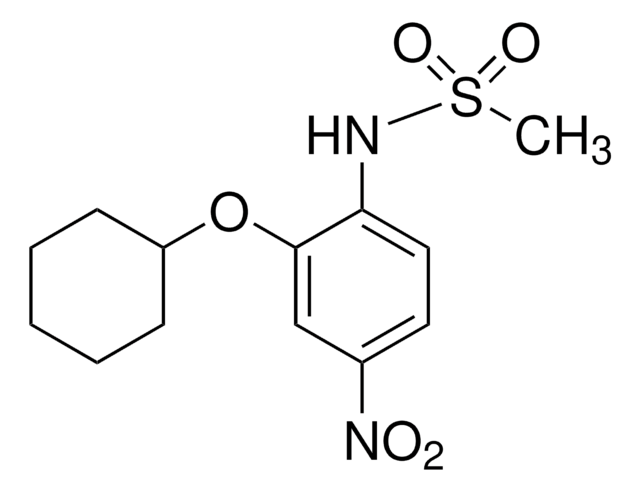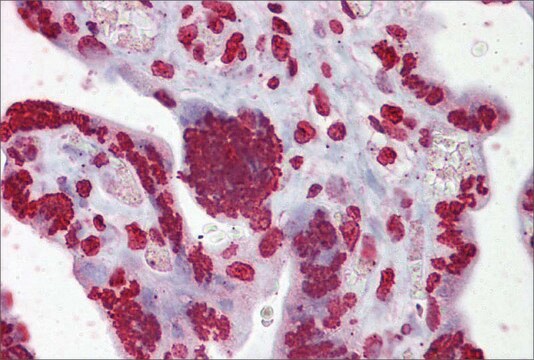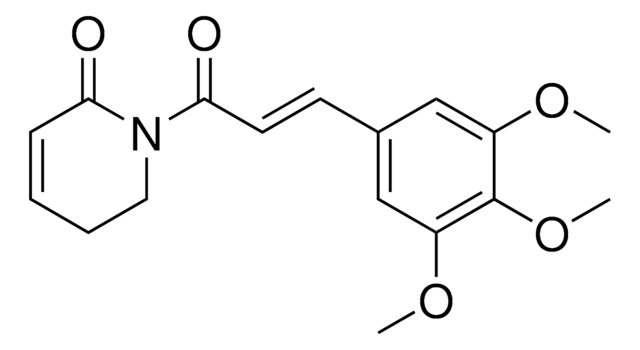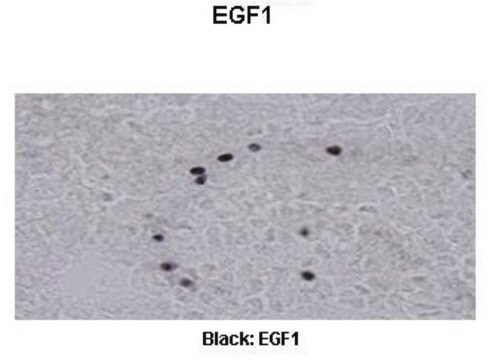MABC1023
Anti-EGR1 Antibody, clone 16A10.1
clone 16A10.1, from mouse
Sinónimos:
Early growth response protein 1, AT225, EGR-1, Nerve growth factor-induced protein A, NGFI-A, Transcription factor ETR103, Transcription factor Zif268, Zinc finger protein 225, Zinc finger protein Krox-24
About This Item
Productos recomendados
origen biológico
mouse
Nivel de calidad
forma del anticuerpo
purified immunoglobulin
tipo de anticuerpo
primary antibodies
clon
16A10.1, monoclonal
reactividad de especies
human
técnicas
immunocytochemistry: suitable
western blot: suitable
isotipo
IgG1κ
Nº de acceso NCBI
Nº de acceso UniProt
Condiciones de envío
wet ice
modificación del objetivo postraduccional
unmodified
Información sobre el gen
human ... EGR1(1958)
Descripción general
Inmunógeno
Aplicación
Apoptosis & Cancer
Transcription Factors
Calidad
Western Blotting Analysis: 0.5 µg/mL of this antibody detected VEGF-induced EGR1 expression in serum-starved HUVECs.
Descripción de destino
Forma física
Almacenamiento y estabilidad
Otras notas
Cláusula de descargo de responsabilidad
Not finding the right product?
Try our Herramienta de selección de productos.
Opcional
Código de clase de almacenamiento
12 - Non Combustible Liquids
Clase de riesgo para el agua (WGK)
WGK 1
Punto de inflamabilidad (°F)
Not applicable
Punto de inflamabilidad (°C)
Not applicable
Certificados de análisis (COA)
Busque Certificados de análisis (COA) introduciendo el número de lote del producto. Los números de lote se encuentran en la etiqueta del producto después de las palabras «Lot» o «Batch»
¿Ya tiene este producto?
Encuentre la documentación para los productos que ha comprado recientemente en la Biblioteca de documentos.
Nuestro equipo de científicos tiene experiencia en todas las áreas de investigación: Ciencias de la vida, Ciencia de los materiales, Síntesis química, Cromatografía, Analítica y muchas otras.
Póngase en contacto con el Servicio técnico
